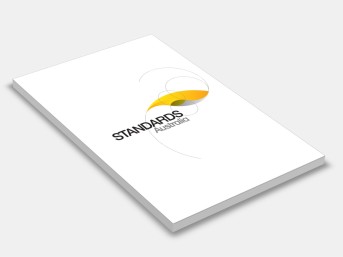AS 2484.1-1990 Fire - Glossary of terms, Part 1: Fire tests
Standards Australia
Supersedes: AS 2484-1981 Fire - Glossary of terms, Part 1: Fire tests
Draft Designation: DR 88115Reconfirmed by: AS 2484.1-1990 Rec:2016 Fire - Glossary of terms, Part 1: Fire tests
This Standard was prepared by the Standards Australia Committee on Fire Coordination to supersede AS 2484—1981, Glossary of terms relating to fire tests. During its preparation, reference was made to the following documents, and where relevant they are referred to appropriately:
AS
1530 Methods of fire tests on building materials, components and structures
1530.1 Part 1: Combustibility test for materials
1530.4 Part 4: Fire-resistance tests of elements of construction
1886 Glossary of terms relating to plastics
2122 Combustion propagation characteristics of plastics
2122.1 Part 1: Determination of flame propagation following surface ignition of vertically oriented specimens of cellular plastics
2484 Fire—Glossary of terms relating to fire tests
2484.2 Part 2: Fire protection and firefighting equipment
3600 Concrete structures
ISO TAG 5 N50 Unified glossary of terms—Fire tests (Draft ISO/IEC guide)
Committees which were the source of various definitions are identified in parenthesis throughout the glossary, as follows:
BD/2 Concrete Structures, (Standards Australia).
FC/— Fire Coordination, (Standards Australia).
ISO/TAG5 Unified Glossary—Fire tests, (ISO).
ISO/TC38 Textiles, (ISO).
This edition provides terminology to be used in connection with fire testing and also makes reference to terms which may be well known but are deprecated by the committee.
Words or expressions ofa descriptive nature are not considered acceptable for use in fire terminology where they may be misinterpreted or misused. Terms are classed as deprecated terms where they —
(a) make claims that cannot be substantiated, such as ‘fire-proofness’;
(b) are likely to give a misleading impression of performance, such as ‘self-extinguishing’, ‘non- burning’ and ‘non-flammable’;
(c) contain implied judgement of relative performance, such as ‘slow burning’, ‘low-flammability’; or
(d) have been superseded by another term, e.g. ’spontaneous ignition’ has been replaced by ‘self-induced
ignition’.
These unacceptable terms imply some unspecified level of quality, property or characteristic.
Words or phrases which indicate some quality, property or characteristic in a manner which does not imply whether that quality, property or characteristic is good or bad, or acceptable or unacceptable, or ascribe any degree or magnitude, should be used. Words such as ‘burning’, ‘combustion’, ‘flaming’ ‘ignition’, ‘incandescence’, and ‘smouldering’, for example, are neutral in this regard and therefore acceptable terms.
Deprecated terms are noted in this glossary without definitions. Where a term is deprecated and there is no sensible alternative, none is given; where a definite alternative term is available it is shown.
A number of commonly used terms listed in Appendix A were considered by the committee, but were rejected as being unnecessary for inclusion in the glossary. The primary reasons for inclusion in Appendix A are as follows:
(a) The term is self-evident and does not need defining.
(b) The term represents a grammatical extension or alternative to an included term.
(c) The term is not used in Australia.
(d) The term is defined in AS 2484.2.
Fire Coordination.
FP-018
CSIRO, Division of Housing, Construction and Engineering; BD/1/2-Design For Fire; BD/4/8-Design Against Fire; BD/18-Fire Tests-Building Materials, Components, Structures; EL/2/10-Electrical Approvals-Plastics Subcommittee; EL/3/13-Cables for Use in Limited Fire Conditions; FP/-Fire Protection and Fire Fighting Equipment; FP/2-Automatic Fire Detection and Alarm Systems; FP/3-Fire Extinguishers; FP/4-Automatic Sprinkler Installations; FP/5-Fire Hose Reels; TX/13-Burning Behaviour of Textiles and Textile Products; Telecom Australia.
